By Demetris Constantinou, Contributor
Over the past two years, we have all been tasked with navigating unchartered territories, due to the outbreak of the Covid-19 pandemic. A catastrophe of unparalleled proportion, which nevertheless, left us with a lot of lessons that should be considered, as we try to shift towards the post-Covid era. As stated in previous articles, professional athletes have been amongst the hardest hit by this pandemic, not necessarily in monetary terms, but in terms of seeing their status quo being challenged. Athletes have to rethink the way they approach their financial well-being and have to recalibrate their strategy towards financial freedom. In this article, we seek to explore how athletes should plan ahead, learning from the lessons of the Covid-19 era, to emerge financially stronger and more independent. Specifically, we will focus on why the pandemic has made the case for the need of multiple revenue streams, and how such streams can be pursued by professional athletes.
An athlete’s overall revenue is made up of income from multiple sources, whether that’s the athlete’s base salary, endorsements, or any other form of income. While the ultimate goal is to maximize revenue, it’s equally important to keep track of where the revenue comes from, and be able to spread it amongst different channels, especially as athletes shift towards the later part of their careers. The first and most basic revenue stream is the athlete’s salary, which is the amount of money an athlete receives to perform in the field, regardless of the sport they participate in. Salaries will likely take up the largest portion of the athlete’s revenue and are relatively stable, given that salaries are mostly determined in long-term contracts, and do not substantially vary unless an athlete is in free agency. The second most common form of revenue is endorsements. In simple words, athletes get paid from companies to market and promote their products in order to reach wider audiences.
Endorsements are amongst the most popular revenue streams for athletes and can sometimes overtake salaries, especially for more famous athletes. Moving on, a third and increasingly popular revenue stream is investments. Investments can take various forms and can be completely irrelevant to the athlete’s sport. Nevertheless, the general characteristic of investments is that they aim to use the athlete’s large capital to create more wealth and increase the athlete’s revenue. Finally, but certainly not conclusively, athletes can earn revenues from other, more unconventional sources, such as participating in TV shows, holding motivational talks, or even producing their own books and movies. Amongst others, examples include Draymond Green, the NBA Forward who in 2020, begun participating in the “NBA on TNT” sports show providing commentary and opinions on the current affairs of the League. Lebron James, the basketball superstar who earlier in 2021, released “Space Jam: A New Legacy”, a movie built on cartoon characters, which serves as the continuation of “Space Jam”, the 1996 family movie starring Michael Jordan. Finally, Tom Brady, the famous American Football quarterback, in 2017 authored his second book; “How to Achieve a lifetime of Sustained Peak Performance”, which is estimated to earn him about $20.3M per year.[1]
Having laid out different types of revenue channels, it’s important to understand why the need for multiple revenue sources in the first place, and how new revenue channels, apart from the traditional salary, can help athletes achieve financial freedom. An athlete’s short-lived career makes the strongest case for multiplying the athlete’s revenue channels, given that the main revenue stream – their salary – is only available for an average of 8-12 years, depending on the athlete’s sport. No athlete can live a financially independent life only on 12 years’ worth of salary, even if that salary reaches the astronomical numbers that some athletes get paid. Athletes need to reduce their dependence on their salaries and build a resilient financial trajectory which involves other forms of income such us endorsements, investments, whether passive or active and become involved in multiple lines of business, preferably unrelated to their sport. The Covid-19 pandemic, which led to NBA players taking a 25% pay cut and MLB players forgoing a large part their salaries[2], proved that salaries are highly susceptible to uncertainties. That, in combination with the short time span of athletes’ careers, creates the need for diversification and the pivoting towards other sources of revenue. Another motive for athletes to multiply their revenue streams, is the fact that salaries are by nature capped. One may say that capped salaries are not an issue, but why should someone leave money on the table when it’s available? It’s not a secret that famous athletes across all sports, such as Conor McGregor (UFC), Lebron James (NBA) and Roger Federer (ATP) make a lot more from their Endorsements[3], compared to their salaries, simply because their leagues cannot reward them for their off-the-court success.
The good news is that in the case of multiplying their revenue streams, athletes don’t have to re-invent the wheel but can rather follow the examples set by other athletes in various leagues. The football superstar Cristiano Ronaldo for example, serves as a great case of how an athlete can multiply their revenue channels. Ronaldo’s yearly earnings in 2017 were estimated to be around $100M, only $58M of which derived from his salary. About $35M of his earnings came from Endorsements in companies like Nike, Toyota and others while the rest came from investments in his own line of footwear, fragrance as well as other miscellaneous investments.[4] Another champion in securing multiple revenue sources is the NBA veteran Chris Paul. Paul earns income from over six different revenue channels, including his Endorsements from State Farm, his investments in Beyond Meat and Hyperice as well as his position as the president of the NBA Players’ association. Chris Paul is also invested in various real estate properties and cars, giving him the flexibility to generate additional revenue at any moment if necessary. Finally, a notable mention and a great entrepreneurial mind is the Tennis superstar Serena Williams. Similar to the above-mentioned athletes, Serena Williams earns a large portion of her income through her winnings and endorsements, but what makes her a noteworthy reference is her investment towards the creation of Serena Ventures[5]. Williams essentially created her own venture capital firm to invest in businesses across multiple industries. By doing so, Williams leveraged her brand to maximize her flow of revenue while minimizing any associated risk.
Despite the above examples, it’s important to note that there’s no blueprint as to how an athlete can safeguard multiple revenue streams. An athlete needs to focus on putting together the right team, including a strong agent and financial advisor. Such team, led by the examples set by financially successful athletes, can open the door for the establishment of multiple revenue channels, and the path towards financial freedom.
For more information on how athletes can build multiple revenue channels, you can contact us at [email protected].
[1] TB12 Competitors, Revenue, Alternatives and Pricing (growjo.com)
[2] Pro Athletes, Pay Cuts, and the COVID-19 Pandemic | The Manual
[3] Highest paid athletes in the world 2021 | Statista
[4] Ronaldo Net Worth 2021, CR7 Salary & Endorsements – Sportskeeda
[5] Who are the most famous athlete investors? (investopedia.com)

